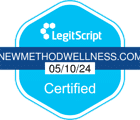Post-traumatic stress disorder (PTSD) is a behavioral health condition that happens to some people after they experience a frightening or traumatic event. PTSD causes sufferers to experience flashbacks, nightmares and daily anxiety. PTSD triggers refer to the different stimuli that can cause anxiety and stress in those with the condition.
PTSD triggers aren’t always caused by external stimuli either. Sometimes they’re cued by thoughts or feelings, which may, in turn, be caused by a situation or environment. Since these triggers may cause uncomfortable feelings of anxiety or tension, it’s important to be aware of what your PTSD triggers are and how to cope with them.
What Is PTSD?
It’s helpful to know what exactly PTSD is if you have a loved one with the condition. Most people recover from trauma without any problems. However, some people develop various symptoms over the weeks and months that follow the event. These symptoms may gradually increase in severity until it becomes difficult for the person to function in daily life. The symptoms are largely psychological and include flashbacks, nightmares, anxiety, paranoia and moodiness. These symptoms can also cause physical issues such as not eating enough or eating too much, interrupted sleep and substance abuse among others.
What Are PTSD Triggers?
Triggers for PTSD vary by person. They can be scents, sounds, sights, feelings or thoughts that are related to the traumatic event. A person might not even notice most of their PTSD symptoms until they experience a trigger. Memories are not created normally in a brain affected by PTSD. Instead of recognizing the memory to be in the past, your brain brings you back to the traumatic event as though it’s happening again. Even though everyone is different in terms of what triggers their PTSD symptoms, there are some common things that work as triggers:
• Seeing a person, place or thing related to the traumatic event
• Seeing a similar event on the news or in a TV show or movie
• Hearing a sound that reminds you such as fireworks or a car backfiring
Types of PTSD Triggers
There are two main types of triggers associated with PTSD: Internal and External. Internal triggers include things like feelings, emotions, memories or sensations. External triggers are people, places, objects and situations.
Some examples of internal triggers include the following:
• Agitation
• Anger
• Anxiety
• Frustration
• Irritability
• Loneliness
• Memories
• Muscle tension
• Pain
• Panic
• Racing pulse
• Sadness
• Vulnerability
Some examples of external PTSD triggers include the following:
• Smells
• Holidays
• News articles
• People
• Places
• Movies or shows
• Seeing a car accident
• Specific words
• Certain dates
• Animals
How To Identify Your Triggers
One of the hardest things about PTSD symptoms is how random they might seem. That’s why it’s important to identify your triggers. Knowing what makes your PTSD symptoms resurface can help you learn to avoid them or be more prepared to cope with them. Ask yourself the following questions and write down the answers in detail:
• What type of situation makes you feel PTSD symptoms?
• What kind of emotions do you feel before the symptoms happen?
• How does your body feel at the time?
• What thoughts were you having?
In order to cope with triggers, you need to know why they’re happening.
Complex PTSD Triggers
Complex PTSD is a fairly recent term used to describe more severe types of PTSD that may include additional symptoms. People with complex PTSD are more likely to have emotional flashbacks where they experience intense feelings that they felt during the traumatic event. These feelings might include fear, despair, panic or shame. You might react to something in the present as if it’s causing the feelings, but you’re actually having a flashback without realizing it.
The traumatic events that can cause complex PTSD include the following:
• Ongoing domestic abuse and violence
• Childhood abuse
• Repeatedly seeing violence or abuse
• Being forced into prostitution
• Torture or kidnapping
• Being imprisoned or enslaved
You’re also more likely to develop complex PTSD if your trauma occurred at an early age and lasted for a long time.
Triggers for complex PTSD are similar to regular PTSD, but they can cause additional adverse symptoms such as the following:
• Being unable to control your emotions
• Intense anger and distrust
• Suicidal feelings
• Dissociative symptoms
• Avoiding relationships
• Feeling empty and hopeless
Coping With PTSD Triggers
The ideal way to deal with triggers that remind you of a traumatic event would be to avoid them entirely. Unfortunately, this is nearly impossible in most cases. Even if you can avoid certain people, places and things, you can’t avoid your own thoughts, emotions and physical sensations. You might also have a difficult time avoiding random situations like hearing a news story or conversation that triggers you into remembering trauma. As it’s very difficult to avoid triggers, it’s important to find ways of coping with them.
Some effective strategies include the following:
• Deep breathing
• Mindfulness
• Relaxation techniques
• Social support
• Expressive writing
• Meditation
• Grounding
The more strategies you can come up with, the better chance you will have of safely managing your triggers. Another reason it’s important to have healthy coping strategies is that they will keep you away from unhealthy strategies like using drugs or alcohol.
Simply being aware of your triggers can help you understand the corresponding emotional reactions. It can help you feel more in control and validated. However, be aware that some people feel the opposite when they try to identify their triggers. Instead of feeling relieved and in control, they feel stressed and anxious by trying to identify their triggers.
In order to cope with potential triggers, it’s a good idea to make a personal safety plan. Start by making sure you have any medication on you that you need as well as emergency contact numbers. Learn to recognize the warning signs of PTSD symptoms, which can include changes in your thoughts, mood and behavior. Be prepared with your own self-coping strategies like deep breathing and relaxation techniques.
Treatment Center For PTSD
PTSD can be treated through methods like trauma-focused cognitive behavioral therapy and eye movement desensitization and reprocessing. Look for quality treatment facilities that offer behavioral health treatment programs and trauma-informed care. As PTSD can lead to other mental disorders, including substance abuse, you can often find PTSD treatment programs in facilities that specialize in dual diagnosis for co-occurring disorders.
New Method Wellness is a dual diagnosis treatment center that offers treatment for PTSD as well as treatment for other behavioral health conditions like depression, anxiety and addiction. Get in touch with our professional treatment center staff today to find out more about our programs and methods.







